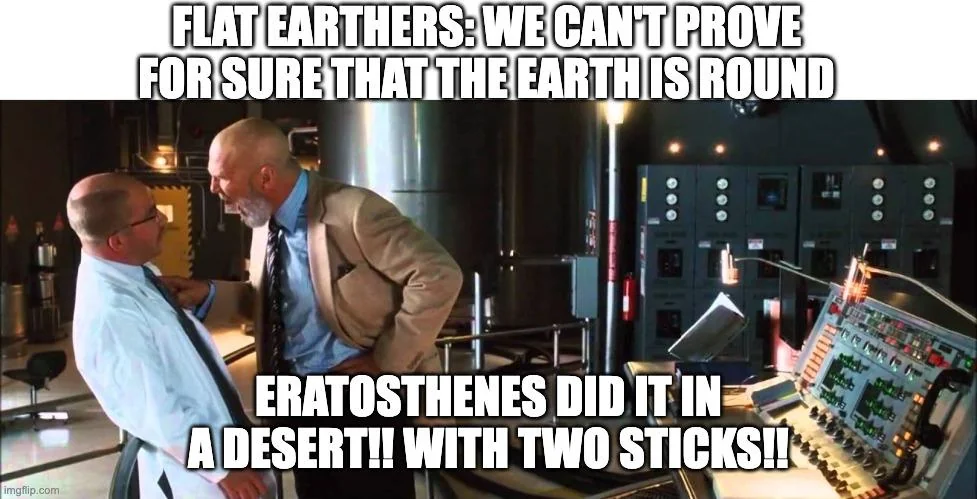this post was submitted on 15 Feb 2025
908 points (99.1% liked)
Science Memes
12345 readers
2484 users here now
Welcome to c/science_memes @ Mander.xyz!
A place for majestic STEMLORD peacocking, as well as memes about the realities of working in a lab.

Rules
- Don't throw mud. Behave like an intellectual and remember the human.
- Keep it rooted (on topic).
- No spam.
- Infographics welcome, get schooled.
This is a science community. We use the Dawkins definition of meme.
Research Committee
Other Mander Communities
Science and Research
Biology and Life Sciences
- [email protected]
- [email protected]
- [email protected]
- [email protected]
- [email protected]
- [email protected]
- [email protected]
- [email protected]
- [email protected]
- [email protected]
- [email protected]
- [email protected]
- [email protected]
- [email protected]
- [email protected]
- [email protected]
- [email protected]
- [email protected]
- [email protected]
- [email protected]
- [email protected]
- [email protected]
- [email protected]
- [email protected]
- !reptiles and [email protected]
Physical Sciences
- [email protected]
- [email protected]
- [email protected]
- [email protected]
- [email protected]
- [email protected]
- [email protected]
- [email protected]
- [email protected]
Humanities and Social Sciences
Practical and Applied Sciences
- !exercise-and [email protected]
- [email protected]
- !self [email protected]
- [email protected]
- [email protected]
- [email protected]
Memes
Miscellaneous
founded 2 years ago
MODERATORS
you are viewing a single comment's thread
view the rest of the comments
view the rest of the comments

Explanation: Not only did the ancient Greek philosopher Eratosthenes (born and raised in what-is-now Libya) know the earth was spherical, he used that knowledge to measure the circumference of the earth - with two sticks and some carefully applied mathematical thought - to an astounding accuracy!
In 2021, mathematicians Matt Parker and Hannah Fry calculated the circumference of the earth by going up to a point of known altitude and measuring the angle down to the horizon, giving them a very accurate 5500 km, which is 34500 km off (86%).
I like how Bill Nye explains it:
https://youtu.be/zAD2_USMohA?t=13m46s